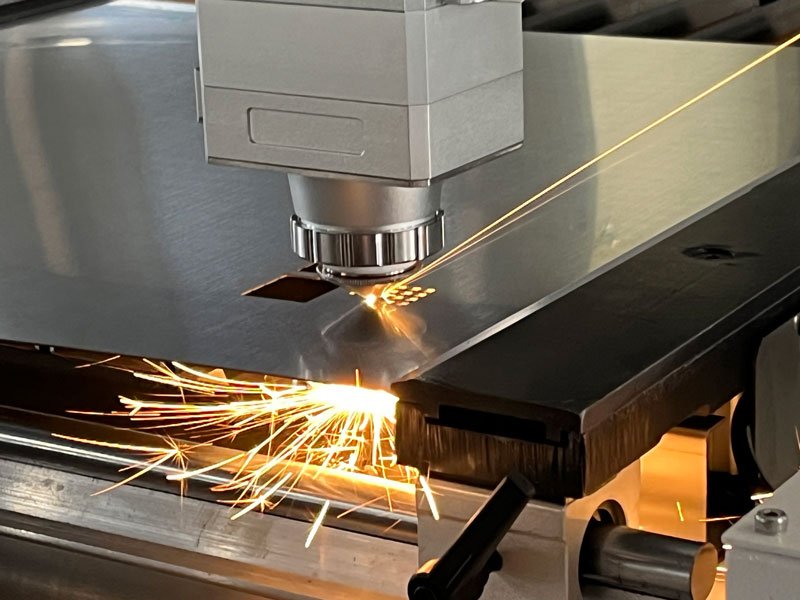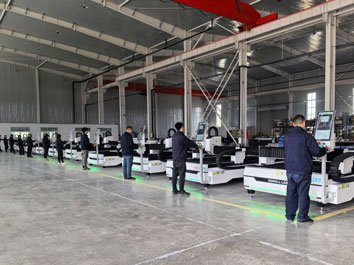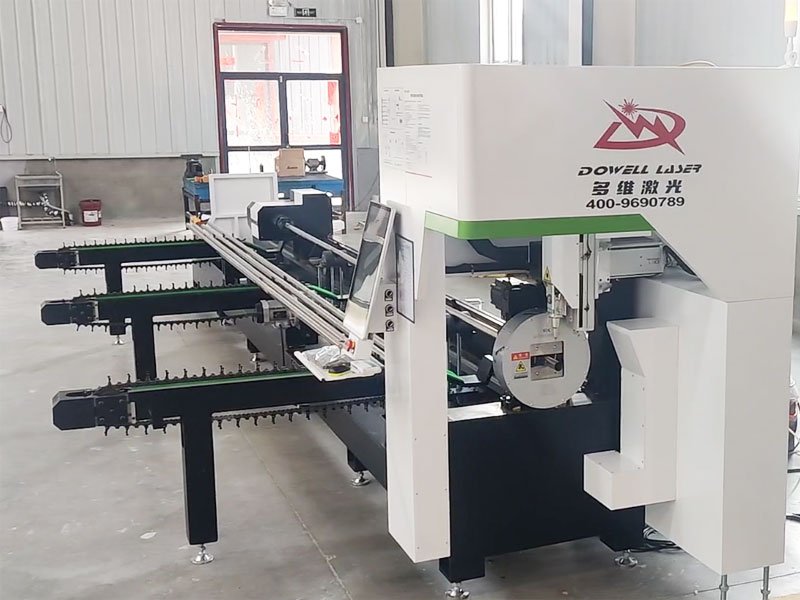In our daily lives, many customers are not very clear about fiber laser vs ir laser. Most of them are used in the field of laser engraving. When choosing a laser, it is necessary to understand the gap between the two. This article will describe these, hoping to be helpful to you.

What is an infrared laser
Infrared lasers are lasers that emit infrared wavelengths, usually operating in the range of 700 nanometers to 1 millimeter. These can be gas lasers, solid-state lasers, or semiconductor lasers.
Such lasers are widely used in medical, communication, material processing, and other fields.
Types of infrared lasers
- CO2 lasers: With a wavelength of 10.6 microns, they are widely used for cutting, welding, and engraving of non-metallic materials such as plastics and wood.
- Nd:YAG lasers: With an emission wavelength of 1.064 microns, they are suitable for metal processing, medical surgery, and more.
- Semiconductor lasers: They can emit near-infrared waves and are widely used in fiber-optic communications and sensing.
What is a fiber laser
Fiber lasers are a type of solid-state laser that uses optical fiber as a gain medium. They use optical fibers doped with rare earth elements such as ytterbium or erbium to generate laser light.
Fiber lasers are suitable for industrial applications because of their high efficiency, compact size, and excellent beam quality.
Types of fiber lasers
- Erbium-doped fiber lasers: They are widely used in material processing, including cutting and welding.
- Erbium-doped fiber laser: Mainly used in the communications field, capable of transmitting data with high throughput.
Fiber Laser Vs Ir Laser Working Principle
Fiber Laser
Light amplification is achieved through total reflection on the inner wall of the optical fiber, and a high-energy laser beam is emitted;
Ir Laser
IR lasers, or infrared lasers Particles in the laser medium emit laser light under the action of stimulated radiation, the wavelength and energy of which depend on the medium type and excitation conditions.
IR laser vs fiber laser application scenario
- Infrared lasers are mainly used in medical, communication, radar, environmental monitoring and other fields.
- Fiber lasers are mainly used in materials processing, measurement, fiber optic communication, and other fields.

Infrared Lasers Application
| Field | Application |
|---|---|
| Military and Security | Used for night surveillance, target detection, identification, and tracking, as well as precise ranging and targeting in harsh environments. |
| Optical Communication | Employed in wired and wireless data transmission, including signal transmission from IoT devices, and as the operating principle behind TV or air conditioner remote controls. |
| Material Processing | Utilized in cutting, drilling, surface processing, welding, and melting various materials such as steel, glass, and plastics. |
| Machine Vision and Measurement | Applied in scanning, positioning, environmental terrain scanning, three-dimensional reconstruction, and similar tasks. |
| Medical Field | Employed to treat skin diseases, muscle pain, arthritis, etc., promote blood circulation, enhance immunity, and relieve pain. |
| Scientific Research | Used for spectral analysis, optical imaging, optical communications, etc., providing high-precision, high-resolution spectral information. |
| Specific Mid-infrared Applications | Utilized in lidar, atmospheric communications, laser ranging, astronomical spectrometer calibration, molecular content detection, and molecular imaging, among others. |

Fiber Lasers Application
| Field | Application |
|---|---|
| Industrial Processing | Fiber lasers are high-efficiency industrial processing equipment used in manufacturing for cutting and welding metal and non-metal materials, such as steel, aluminum alloy, ceramics, etc. Used in semiconductor processing for cutting superhard materials and making micro-nano structures. Widely used in mechanical processing, automobile manufacturing, electronic manufacturing, aerospace, and other fields due to their high energy density, speed, quality, non-contact processing, and low cost. |
| Communication | In the communication field, fiber lasers are crucial for generating high-speed and high-quality laser signals, amplifying and modulating optical fiber signals. They are used to manufacture optical devices such as fiber amplifiers and fiber couplers, improving the transmission performance of optical communication systems. |
| Medical Field | Fiber lasers are employed to treat various conditions, including skin diseases, cardiovascular disease, cancer, etc., by cutting diseased tissue and for laser treatment. The high energy density and collimation of fiber lasers allow for precise cutting and location treatment, offering less discomfort to patients and reducing the likelihood of sequelae. |
Fiber Laser Advantages:
- High Efficiency: Due to the fiber’s waveguiding properties, these lasers are highly efficient, converting a significant portion of the pump light into laser output.
- Excellent Beam Quality: Fiber lasers can produce very high-quality beams, making them suitable for precision applications like cutting and welding thin materials.
- Scalability: The power output of fiber lasers can be easily scaled by increasing the length of the doped fiber or using multiple fibers.
- Durability and Reliability: They are known for their ruggedness and reliability, with no moving parts and excellent thermal management.
IR Laser Advantages:
- Versatility: IR lasers can be designed to operate across a wide range of infrared wavelengths, making them versatile for various applications, including industrial cutting, medical surgeries, and military applications.
- Power Output: Certain types of IR lasers, like CO2 lasers, can achieve very high power outputs, suitable for heavy-duty cutting and engraving tasks.
- Material Processing: IR lasers are particularly effective for processing non-metallic materials and metals, offering flexibility in manufacturing and fabrication processes.

Differences Between Fiber Laser Vs Ir Laser
Wavelength range
- The wavelength of infrared lasers is usually in the range of 0.75~1000 microns;
- The wavelength of fiber lasers is usually in the range of 1 to 2 microns.
Output form
- Infrared lasers mainly use free space output, but they can also be output through optical fibers;
- Fiber lasers can only output through optical fibers and cannot perform free-space output.
Performance
- Because fiber lasers use optical fibers for laser amplification and modulation, they usually have a high beam quality factor and a stable laser beam, and the emission power changes little;
- Infrared lasers can be difficult to achieve high levels of single pulse energy and wavelength, and samples are often smaller.
| Characteristic | Infrared Laser | Fiber Laser |
|---|---|---|
| Wavelength Range | 700 nm – 1 mm | 700 nm – 1 mm |
| Optimal Wavelength | Typically around 1030 nm | Typically around 1030 nm |
| Efficiency | Low | High |
| Beam Quality | Medium | Excellent |
| Applications | Medical, Communications, Material Processing | Industrial Cutting, Welding, Communications |
| Cost | High | Low |
Conclusion
Whether to choose an infrared laser or a fiber laser depends on the specific application requirements. When high efficiency and compactness are required, especially in industrial processing, a fiber laser may be the best choice. For some applications in medicine or material processing, an infrared laser may be more suitable. Understanding the characteristics and applicable scenarios of each type can help users make a more informed choice.
FAQ
What is the wavelength range of infrared lasers?
The wavelength range of infrared lasers is very wide, usually from 700 nanometers to 1 millimeter. Infrared lasers of different wavelengths have different characteristics and applications. Near-infrared lasers are often used in fiber-optic communications, while mid-infrared and far-infrared lasers are widely used in material processing and medicine.
What is the difference between infrared lasers and visible light lasers?
The main difference between infrared lasers and visible lasers is the wavelength. The wavelength of infrared light is longer than that of visible light and cannot be seen directly by the human eye. Infrared lasers also differ from visible light lasers in terms of material penetration and thermal effects.
Is infrared laser harmful to the human body?
Infrared lasers are harmful to the human body, especially high-power infrared lasers. Direct radiation from infrared lasers may cause eye damage, skin burns, etc. When using infrared lasers, you must strictly follow safety precautions, wear protective glasses, and avoid direct contact with the laser beam.



